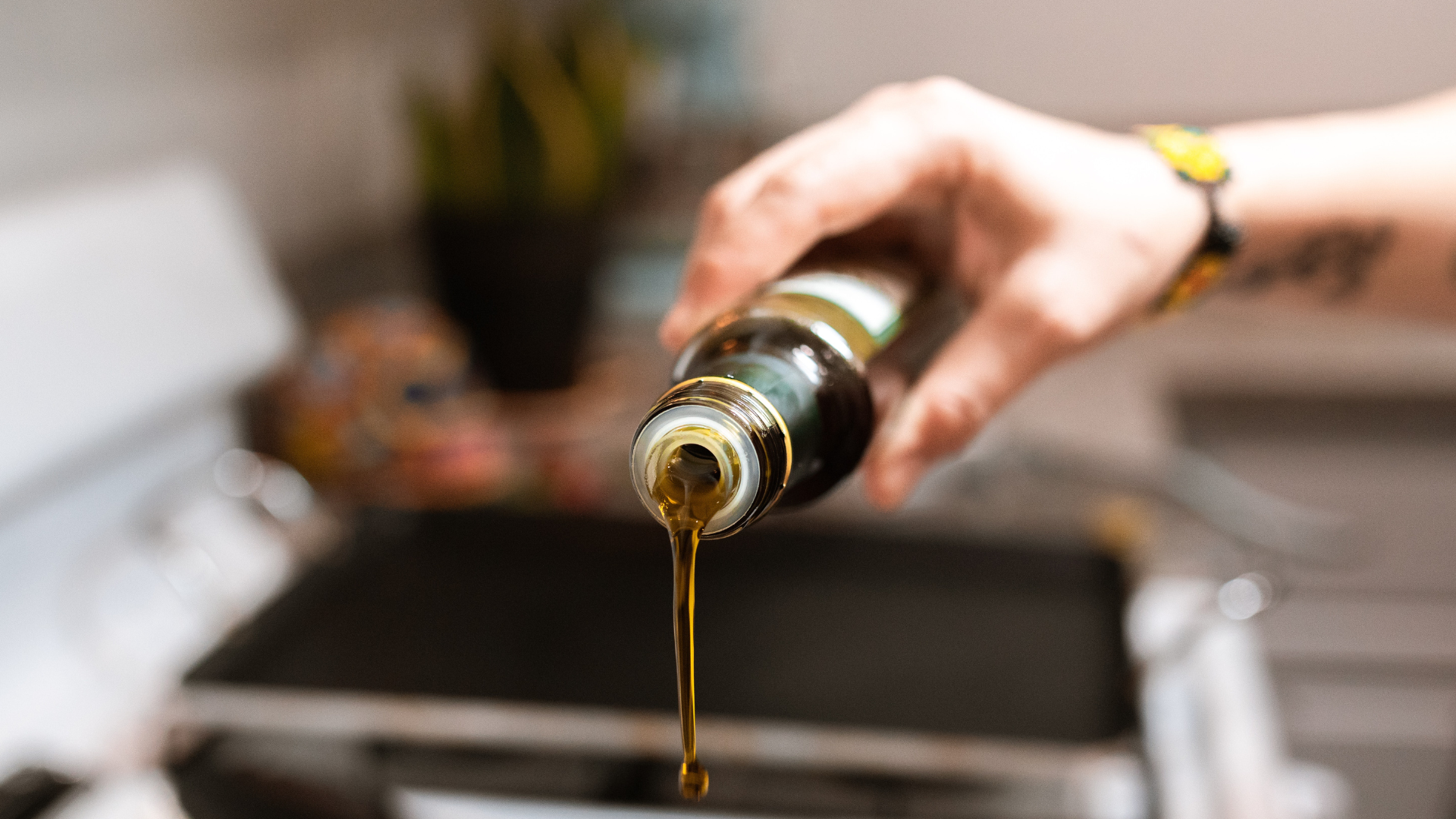Nothing beats a fresh sliced sourdough loaf with a bowl of garlic & herb dipping oil. It is packed full of fresh garlic, herbs and the star of the show – the olive oil. It makes my mouth water as I am sitting here writing about it. Anytime I take this to a friend’s house or serve it at a dinner I am hosting, the bowl is empty by the end of the night. It’s a hard combo to resist. This is a perfect pair with a pasta dish or a bowl of soup, or really any meal will do!
Olive oil is a staple ingredient in many kitchens around the world. It is not only versatile but also healthy, as it is loaded with monounsaturated fatty acids, antioxidants, and anti-inflammatory compounds. However, not all olive oils are created equal. There are different kinds of olive oil, each with its unique characteristics, uses, and benefits. In this post, we’ll explore the differences between the different kinds of olive oil and their specific uses.
1. Extra Virgin Olive Oil (EVOO)
Extra virgin olive oil is the highest quality olive oil available. It is made by cold-pressing the olives without the use of heat or chemicals. This process preserves the oil’s natural flavors, nutrients, and aroma. EVOO has a low acidity level, usually less than 0.8%, and a fruity, slightly bitter taste. It is excellent for dressings, dips, and drizzling over cooked vegetables, pasta, and bread. EVOO is also suitable for cooking at low to medium temperatures, such as sautéing and roasting.
2. Virgin Olive Oil
Virgin olive oil is also made by cold-pressing the olives, but it has a higher acidity level, between 0.8% and 2%. Virgin olive oil has a milder flavor and aroma than EVOO, and it is suitable for general cooking purposes, such as frying and baking. It is also a great substitute for vegetable oil, butter, or margarine in recipes.

3. Olive Oil (Pure or Light Olive Oil)
Olive oil or pure olive oil is a blend of virgin and refined olive oil. Refined olive oil is made by using heat and chemicals to extract the oil from the olives. This process removes any impurities, but it also eliminates some of the oil’s natural flavors and nutrients. Olive oil has a higher smoke point than virgin olive oil, making it suitable for high-temperature cooking, such as frying and grilling. It has a mild flavor and aroma, making it an ideal choice for dishes that require a neutral oil taste.
4. Extra Light Olive Oil
Extra light olive oil is a highly processed oil that is made by using heat and chemicals to extract the oil from the olives. It has a very mild flavor and aroma and a high smoke point, making it suitable for high-temperature cooking, such as frying and baking. However, it has fewer nutrients and health benefits than other types of olive oil.
I still remember the first time I truly experienced olive oil—not just as an ingredient, but as something special. I was traveling through a small coastal town, and a local chef invited me to try a dish the way it was meant to be eaten. He poured a deep green, peppery extra virgin olive oil onto a plate, handed me a piece of fresh bread, and simply said, “Taste.”
That first bite changed everything. The richness, the slight bite at the back of my throat, the way it transformed something as simple as bread into something luxurious—I was hooked. From that moment on, I started paying attention to olive oil, not just as a cooking fat but as a key ingredient that could make or break a dish.
The olive oil you choose matters. Extra virgin brings boldness and depth, perfect for drizzling over salads or finishing dishes with a flourish. Virgin olive oil offers a softer touch, blending seamlessly into everyday cooking. And when you need high heat without overpowering your food, extra light olive oil steps in as the quiet hero.
But here’s the secret: even the best olive oil loses its magic if it’s not stored properly. Keep it in a cool, dark place, use it within six months of opening, and savor every drop. Because when you treat olive oil right, it rewards you—transforming even the simplest meal into something unforgettable.
So next time you reach for your bottle, don’t just use it—experience it. Let it elevate your cooking, bring warmth to your table, and remind you that sometimes, the simplest ingredients hold the most magic.
Written by : Alisha Anderson
LET’S CONNECT!
BE NOTIFIED ABOUT NEW PODCAST EPISODES, BOOKS & ARTICLES, EVENTS & COURSES.




